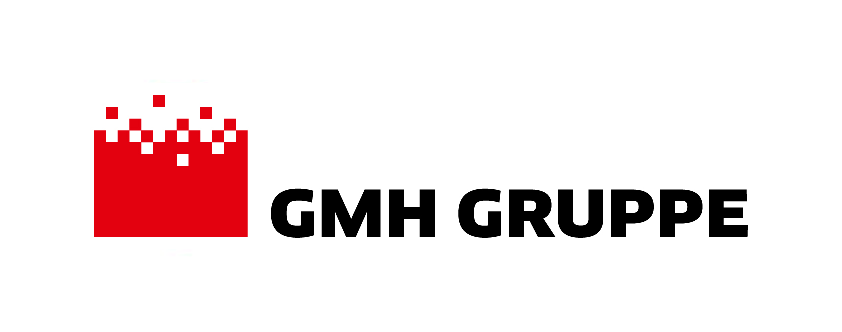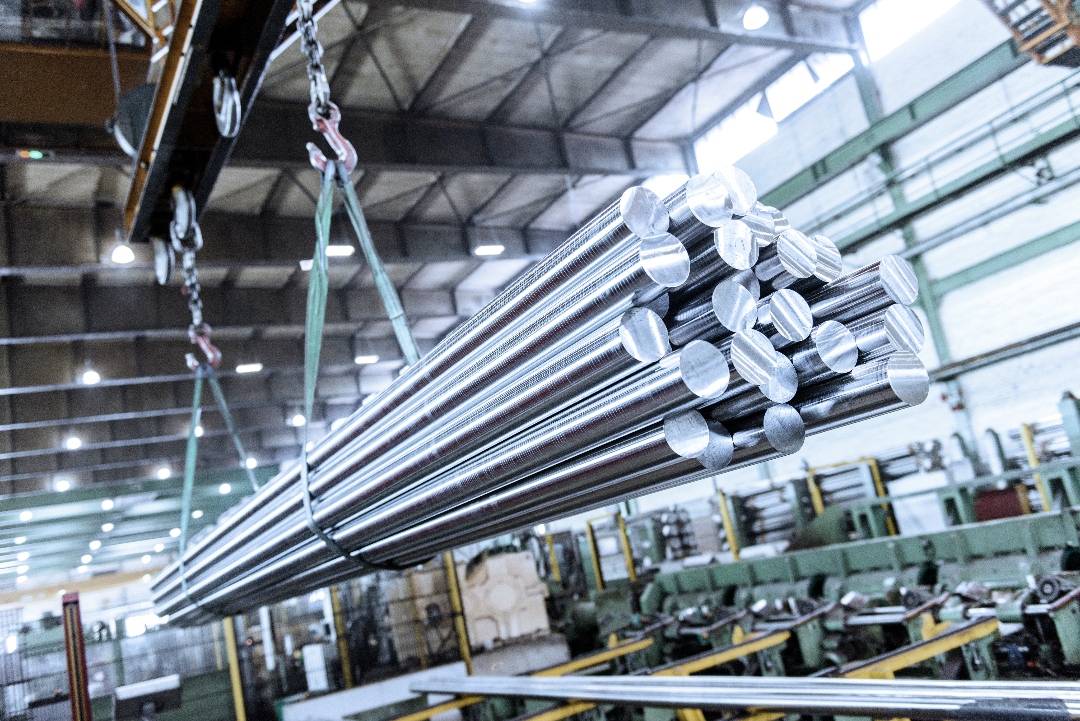
GMH Gruppe is the only steel producer taking part in the "Woche der Umwelt" (Environment Week ) at Bellevue Palace in Berlin. On 4 and 5 June, the Group will be presenting innovative ways of transforming the steel industry to the Office of the Federal President and the Federal Environmental Foundation.

The Federal President is once again inviting guests to "Woche der Umwelt” in June. GMH is the only steel producer to have been selected by an independent jury to present the latest innovative developments in the green transformation of the industry in the Palace grounds. Around 190 companies and organisations will showcase their ideas and solutions for a climate-neutral future at the trade exhibition organised jointly by the German Federal Environmental Foundation and the Office of the Federal President. The organisers are expecting a total of 12,000 invited visitors, including high-ranking representatives from business, politics, science and wider society.
GMH Gruppe impressed the judges with its "Pioneers on the road to climate-neutral electric steel production" approach, which includes ground-breaking transformation projects. "It is a special honour for us that our projects were selected by the jury and are thus deemed exemplary in the transformation of an entire industrial sector. Steel is essential for our modern society and changing its production is a necessary step on the path to climate neutrality. With our innovative approaches, we can show that sustainable, future-oriented electric steel production is possible in Germany," says Luciana Filizzola, Director Sustainability and Communications at GMH Gruppe.
GMH Gruppe has set itself the goal of manufactuering steel products under almost climate-neutral conditions by 2039. The company already relies on electric melting processes, which enable a reduction in CO2 emissions of up to 80% compared to conventional steel production. To continue along this path, GMH Gruppe plans to halve its greenhouse gas emissions by 2030.
This plan is being implemented via a targeted roadmap characterised by innovative projects. This involves modifying processes and methods in order to optimise further progress towards CO2 reduction. At “Woche der Umwelt”, the Green Steel pioneers will provide an insight into their transformation strategy and key projects:
CO2 is the currency of transformation - the PCF is the price tag
Georgsmarienhütte GmbH has developed algorithms for a detailed calculation of the product carbon footprint (PCF) in order to determine the fully automated CO2 effect of the products manufactured at the site, on the basis of actual values. The calculation tool for determining the PCF has been validated by TÜV SÜD for 1,000 steel variants and provides values for each individual order that are appropriate to the source.
Heat treatment using electricity – switching fuel for future markets
Green electricity replaces fossil natural gas in heat treatment: This is made possible by the investment in an inductive single-bar tempering system at Georgsmarienhütte GmbH. Every year, 17,000 tonnes of steel can be tempered at the plant to produce pre-material for particularly stressed components. The material is used to produce heavy-duty key components, such as screws and fasteners for wind turbines or steering rods for electric cars. This plant alone saves around 2,800 tonnes of CO2 every year compared to the natural gas-based process.
Forging furnaces using green hydrogen - energy-intensive processes in transition
In future, the furnaces at Schmiedewerke Gröditz will gradually be operated with hydrogen. A pilot project is currently underway at furnace 31, and by investing early in H2 readiness, GMH is signalling the fastest possible start of regular operations using hydrogen as soon as it is available. The technologically sophisticated conversion is another important step towards climate neutrality, as no CO2 emissions are produced when the hydrogen is burnt.
Improving load management - AI determines process pauses for optimum capacity utilisation
Small optimisations with great potential for energy savings: The electric arc furnace at Georgsmarienhütte GmbH is the largest energy consumer at GMH Gruppe. During production, its power consumption competes with the power available to the entire plant. The aim therefore is to optimise the integration of the furnace into the load management system. For this purpose, production-related process pauses at the electric arc furnace are scheduled every quarter of an hour, in order to optimally distribute the power available throughout the plant and prevent the maximum permissible peak load from being exceeded. Artificial intelligence (AI) is used to fill knowledge gaps and provide load management with information on the course of continuing production at the electric arc furnace. These measures will also stabilise the regional electricity grid.
Focus on electricity and natural gas requirements - energy forecasting using AI
GMH Gruppe operates many energy-intensive units in order to manufacture its broad product portfolio. An important prerequisite is an efficient and seamless supply of energy. By forecasting energy requirements using artificial intelligence, electricity and natural gas requirements are predicted in various resolutions up to one year in advance and automatically transmitted to the energy supplier so that they can plan optimally. GMH Gruppe's energy purchases can therefore be predicted and relieve the burden on the grid, which is in the interests of all energy consumers, particularly during the ongoing transformation.

Senior Editor & Senior Account Manager
Beitrag teilen